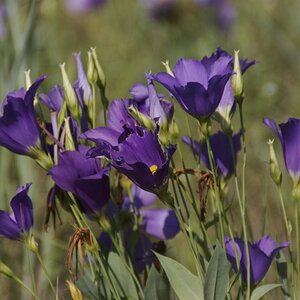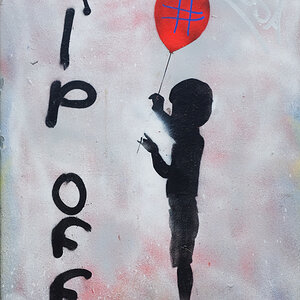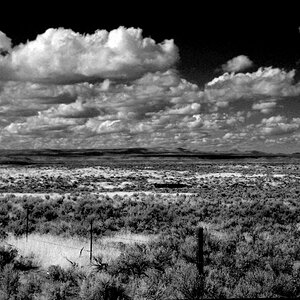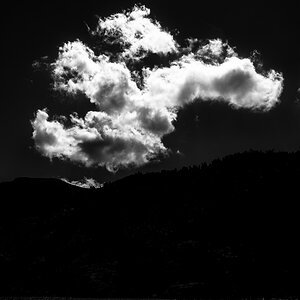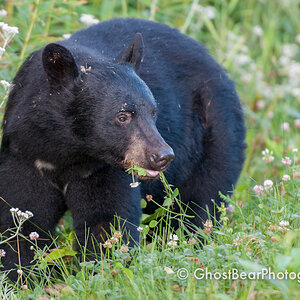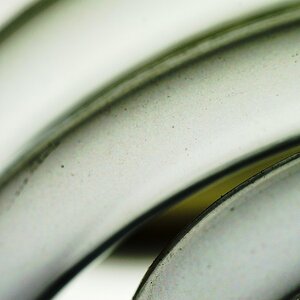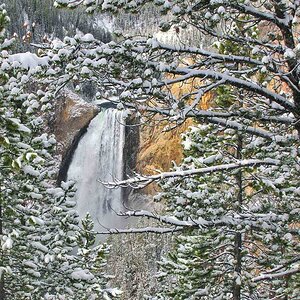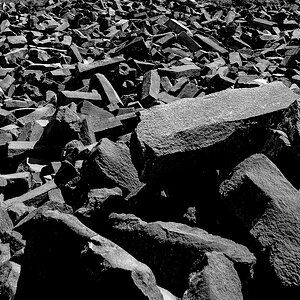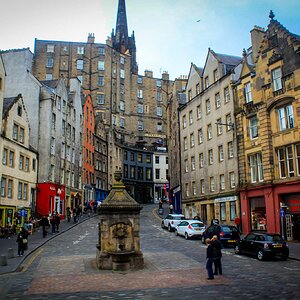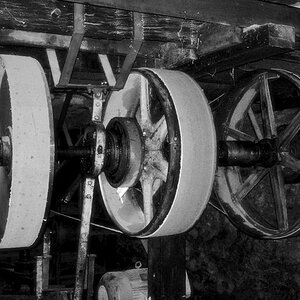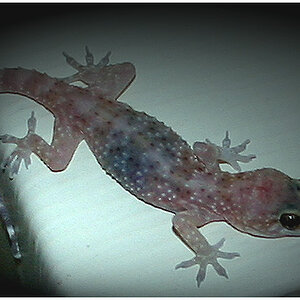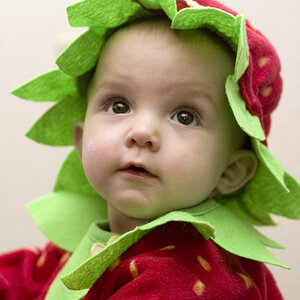- Joined
- Mar 29, 2016
- Messages
- 14,814
- Reaction score
- 8,261
- Can others edit my Photos
- Photos NOT OK to edit
In another thread I posted a question on lighting the background. Derrel put me on to Dean Collins which I understood but still had to wrap my mind around what he was saying in practice. While I still had everything set up, I decided to experiment.
The given: The background is a white sheet, approximately 6' behind the flowers. The flowers were lit from camera right at about 4 o'clock by an ocatabox. A flag was placed on the back side to prevent spill over on the background. A white reflector was placed on camera left at about 10 o'clock. . The back ground was lit by another strobe with a large umbrella modifier on camera left between the flowers and the background, high and angled down.
The objective: To light the background to produce either a pure white, or pure black, by only altering the reflected light reading from the background.
In the first shot, the key light was metered to an incident reading of f/8 the background was metered at a reflective reading of f/11 (1 stop over) at the camera. Sampling the background I'm getting an RGB: 252,252,252 in the bottom left quadrant to RGB: 242, 242, 242 in the upper right quadrant. Which I would expect given that I only had one light on the background. Had I had a second light to balance out the background, I believe it would have been fairly easy to get a consistent across the board reading of just under the pure white I was looking for.

In the second shot I was quickly reminded of why in the video Collins metered the subject at a higher aperture. The key remained at the same f/8, but the background was metered to a reflective reading of f/3, which was only roughly 2 1/2 stops under the subject. In order to get a true black, Collins recommended 4 1/2 stops. However even if I had started at a higher aperture on the subject, the ambient light in the room was such, that I could not have reach the -4 1/2 stops. While the ambient light isn't so much a factor in taking the background white, it is a major factor in going black. Also, the effect of uneven light is really apparent when trying to go black. Sampling the lower left quadrant I was getting RGB 127:127:127 with falloff into the upper quadrant of RGB: 52:52:52.

Interestingly when I went back to try to get a more even light on the background for a white. I metered the subject at f/7.6 and the background at a reflected reading of f/16 for a difference of just over 2 stops. The white still remained at RGB 252.252.252 in the lower quadrant but there was less change across the image until it got closer to the far side.

Conclusion: using Collins' method of metering the subject as an incident reading and then metering the background as a reflective not only works, but will give predictable results. I didn't post the middle one, but matching the background reading to the subject will as he said give you a neutral gray background. With some practice this could be a rapid way of dialing in your background lighting saving a ton of time over the trial and error method. While I didn't try it supposedly a black background will work the same way. The ability to change from black to gray to white backgrounds with only an adjustment to your lights fascinates me. While ambient light doesn't effect the white as bad, I suspect it would still be easier to start without a lot of excess light bouncing around.
My thanks to @Derrel for recommending the video.
The given: The background is a white sheet, approximately 6' behind the flowers. The flowers were lit from camera right at about 4 o'clock by an ocatabox. A flag was placed on the back side to prevent spill over on the background. A white reflector was placed on camera left at about 10 o'clock. . The back ground was lit by another strobe with a large umbrella modifier on camera left between the flowers and the background, high and angled down.
The objective: To light the background to produce either a pure white, or pure black, by only altering the reflected light reading from the background.
In the first shot, the key light was metered to an incident reading of f/8 the background was metered at a reflective reading of f/11 (1 stop over) at the camera. Sampling the background I'm getting an RGB: 252,252,252 in the bottom left quadrant to RGB: 242, 242, 242 in the upper right quadrant. Which I would expect given that I only had one light on the background. Had I had a second light to balance out the background, I believe it would have been fairly easy to get a consistent across the board reading of just under the pure white I was looking for.
In the second shot I was quickly reminded of why in the video Collins metered the subject at a higher aperture. The key remained at the same f/8, but the background was metered to a reflective reading of f/3, which was only roughly 2 1/2 stops under the subject. In order to get a true black, Collins recommended 4 1/2 stops. However even if I had started at a higher aperture on the subject, the ambient light in the room was such, that I could not have reach the -4 1/2 stops. While the ambient light isn't so much a factor in taking the background white, it is a major factor in going black. Also, the effect of uneven light is really apparent when trying to go black. Sampling the lower left quadrant I was getting RGB 127:127:127 with falloff into the upper quadrant of RGB: 52:52:52.
Interestingly when I went back to try to get a more even light on the background for a white. I metered the subject at f/7.6 and the background at a reflected reading of f/16 for a difference of just over 2 stops. The white still remained at RGB 252.252.252 in the lower quadrant but there was less change across the image until it got closer to the far side.
Conclusion: using Collins' method of metering the subject as an incident reading and then metering the background as a reflective not only works, but will give predictable results. I didn't post the middle one, but matching the background reading to the subject will as he said give you a neutral gray background. With some practice this could be a rapid way of dialing in your background lighting saving a ton of time over the trial and error method. While I didn't try it supposedly a black background will work the same way. The ability to change from black to gray to white backgrounds with only an adjustment to your lights fascinates me. While ambient light doesn't effect the white as bad, I suspect it would still be easier to start without a lot of excess light bouncing around.
My thanks to @Derrel for recommending the video.


